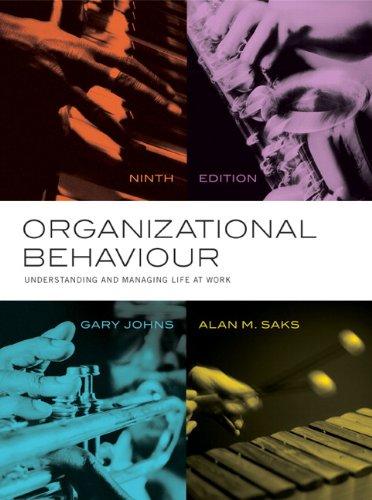Tom was the manager of three research and development laboratories for a large chemical and materials corporation.
Question:
Tom was the manager of three research and development laboratories for a large chemical and materials corporation. He supervised general operations, budgeting, personnel, and proposal development for the labs. Each lab had several projects, and each project team was headed by a project director, who was usually a scientist or an engineer. Tom had been project director for 10 years in another of the corporation’s labs and had been promoted to lab manager four years ago. Although he had to transfer across the country to take this job, he felt he had earned the respect of his subordinates. He had been regarded as an outsider at first, but he worked hard to be accepted, and the lab’s productivity had gone up over the last two years. Tom’s major worry was keeping track of everything. His busy schedule kept him from close supervision over projects.
As in most labs, each project generally went its own way. As long as it produced results, a project enjoyed a high degree of autonomy. Morale was usually high among research staff. They knew they were on the leading edge of the corporation’s success and they enjoyed it. The visibility and importance of innovative research were shown by the fact that project directors were regularly promoted upward. It was in this milieu that Tom decided that productivity might be further increased if research creativity were heightened. Research teams often met to discuss ideas and to decide on future directions.
In these meetings ideas were often improved upon, but they could also be killed or cut off. Tom had studied research on decision making, which indicated that groups often suppress good ideas without a hearing; the research suggested ways of preventing this suppression and enhancing group creativity.
Tom hoped to harness these findings by developing standard procedures through which idea development would be enhanced rather than hindered in these meetings. Tom asked four project directors if they were willing to work with him to review the research and meet regularly over the summer to help formulate appropriate procedures. The four agreed to take on the task and the group began its work enthusiastically.
During the first six weeks of the summer the group met weekly to discuss relevant articles and books and to hear consultants. The group was able to narrow down a set of about 15 procedures and programs to 4 prime possibilities. Eventually, 2 programs emerged as possibilities. However, as the list was narrowed from 4 to 2, there was a clear split in how the group felt.
QUESTIONS
1. Discuss how the stages of group development and the punctuated equilibrium model apply to the Creativity Development Committee. Did the group progress through any of the stages of these models? Did the group fail to resolve any issues implied by these models?
2. Is the choice of the best creativity development program an additive, disjunctive, or conjunctive task? Explain your reasoning. Discuss the implications of the task type for what happened on the committee.
3. Did role ambiguity surface in the case? If so, how so?
4. Did role conflict surface in the case? If so, which type or types occurred?
5. How did status issues emerge in the committee?
6. Did the committee share a mental model about its goals and procedures?
Step by Step Answer:

Organizational Behaviour Understanding And Managing Life At Work
ISBN: 9780133347500
9th Edition
Authors: Gary Johns, Alan M. Saks





